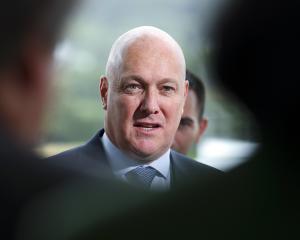Nobody would envy the Southern District Health Board having to decide where primary birthing facilities should be in the Central Otago/Wanaka area.
Four options for consideration have been presented to the public after a consultation which resulted in more than 300 submissions. Now, the board is seeking further feedback on these options, with the aim of making a decision in October.
It may have been an understatement when a doctor, speaking at last week’s public meeting in Cromwell to discuss the options, described the situation as ‘‘a pretty complex beast’’.
Questions have already been raised about the reliability of the population projections used in the development of the options. It is likely these figures may come under more scrutiny given uncertainty about everything in the post-Covid-19 climate.
Submitters are being asked to give their first and second preferences on the options and indicate what level of importance they give various factors including travel times to the centres, co-location with other services and around-the-clock access, staffing, and the ability to transfer elsewhere in an emergency.
Whatever the decision turns out to be, it will have been a long time coming, as concerns have been raised for many years about the adequacy of the service, particularly in the Wanaka area.
Board chief executive Chris Fleming made it clear to the meeting that the status quo was not an option, but also that each of the options had trade-offs.
Only one of the four options presented would involve leaving the Charlotte Jean Maternity Hospital as a birthing unit in Alexandra. In that scenario, there would be a new primary birthing unit at Wanaka.
Another option involving a new unit at Wanaka proposes shifting the Queen Charlotte unit to Dunstan Hospital in Clyde.
In the other two options the Charlotte Jean unit would be decommissioned in favour of new units at Cromwell or Dunstan Hospital.
Submissions earlier received by the board show that the Charlotte Jean unit is much loved and highly valued by women and the community.
If it does go in the changes because it is seen to be in the wrong place, it will be vital for the expertise and atmosphere evident there not to be lost in the rush for something new.
In recent years, issues around rural maternity services in the SDHB region have never been far from the headlines, including the question of adequate payment for midwives who have not been served well by the current standard payment per birth system.
There has been cautious optimism about the recent announcement of a $242million funding boost to maternity services around the country.
This includes extra funding to recognise the work of rural midwives and the care midwives provide to those who have high-needs pregnancies.
The Government has also said midwives will be paid for a broader range of services, specifically providing antenatal home visits to women who need to be seen at home, co-ordinating care across agencies and supporting families experiencing miscarriage or the death of a baby.
As we await the details of the funding, it is not known exactly what this will mean for midwives and the whanau they serve in Central Otago/Wanaka, but any improvement would be welcome.
A midwife told last week’s Cromwell meeting that there were plenty of midwives in the country, but the problem had been there was not a tenable working environment for them.
For the sake of our rural families, it is to be hoped the new funding helps to make some real progress on this.












